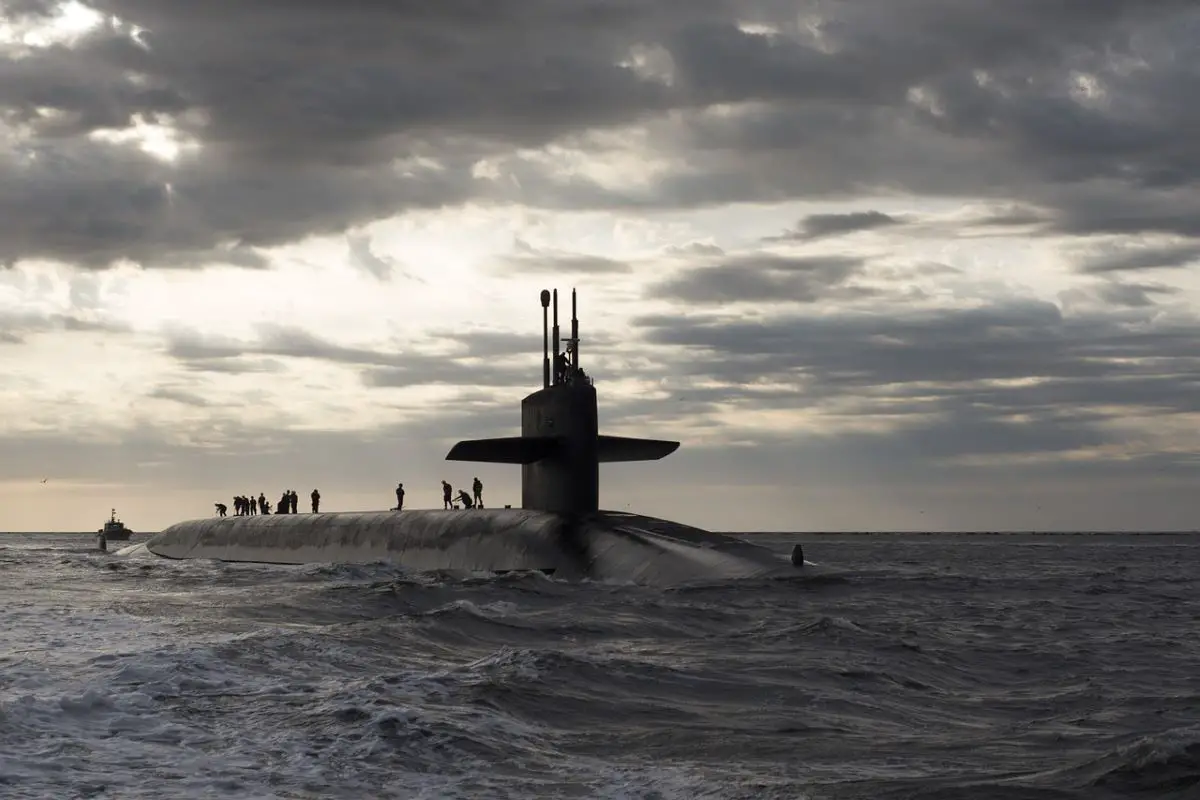Most modern submarines can now operate at depths of 300 to 450 meters (900 to 1,476). Using its hydroplanes, a submarine can reduce its depth to 3 to 4 meters below the waterline before it surfaces from that depth.
A nuclear submarine can go down to a depth of 300 meters (900 feet). It has 134 crew members and is larger than Atlantis, the research vessel.
The Submarine Hull Structure
Submarines’ ability to withstand water pressure largely depends on the materials they are constructed with and their hull capacity. Submarines cannot dive as deep as underwater research vehicles. An underwater research vehicle is designed to navigate underwater and conduct searches, whereas submarines are designed for various purposes, including stealth, sound absorption, silence, maneuverability, etc. Cost is another critical factor.
There are two major components of a submarine hull: the light hull, and the pressure hull. A submarine’s hull is a structure that holds water, assisting it to maintain buoyancy underwater. A light hull is the outer, non-watertight hull of a submarine. It provides a hydrodynamically efficient shape. Typically, the light hull is made from thin steel plates because it has the same pressure on both sides. Within the outer hull, there is a strong hull, or pressure hull, which allows it to withstand the pressure from the outside while maintaining normal atmospheric pressure on the inside. The pressure hull is usually made of thick, high-strength steel with complex construction and high strength reserve.
Subs are also constructed of carbon steel or titanium. Titanium is better for stealth, however, it cannot be used for many multiple dives as it tends to get brittle.
How Deep Can A Submarine Dive?
All submarines have a safe diving depth, and this is achieved for exercise purposes. aa
There is a safe diving depth for any sub, and this is regularly achieved for exercise purposes. Engineers involved in the design and construction of the boat calculate the theoretical maximum diving depth. As long as it has an element of caution, it can theoretically be exceeded. Beyond this depth is the crush depth of the sub, which, if exceeded, leads to the submarine imploding. Of course, these limits can be worked out, but if there is any kind of accident, you wouldn’t be able to determine its exact crush depth.
Also, the endurance of the submarine is determined by the age of the hull of that sub and how much maximum depth the sub exceeded. The life of the submarine’s hull is determined by the submergence cycles. Hence, every time a sub submerges in water and goes deep, it shortens the life of the hull.
Exceeding the test depth also shortens it. Then it becomes a question of how economically feasible it is to keep the sub active. Subs come with different depth numbers and test depths. Also, a submarine is expected to achieve them operationally without any ill effects. When you test and certify submarine systems, they are exposed to sea pressure.
Every submarine has its own specified max depths of certain feet. This is gained during the initial testing of the class of submarine. This test depth, for the military submarines, is classified even further, in regards to how deep it can repeatedly go. The maximum depth, which includes depth of collapse or implosion, is around 1.5 to 2 times deeper.
You May Like This Article: Does Spirit Airlines Have WiFi?
How Do Submarines Submerge?
Submarines float on the surface with the help of air-filled ballast tanks. Submersibles have valves at the top of their ballast tanks that are opened when they submerge. As the air escapes, seawater collects at the bottom of the tank. Eventually, the sub submerges because it becomes heavier. When the submarine is submerged or on the surface, it takes four people on duty to drive it. The two junior enlisted members at the front are the helmsman and planesman. Using controls to adjust the rudder and diving planes, they steer left, right, and up and down. A diving officer supervises each of their actions. As the fourth member of the watch team, the Chief of the Watch, works near the Ballast Control Panel (BCP). BCP controls the ballasts, which submerge and surface the boat, as well as maintain buoyancy and trim when submerged.
How Do Submarines Surface?
Submarines can surface in several different ways, one of which is by blowing to the surface. Ballast tanks are emptied by blowing high-pressure air into them to replace seawater. Displacement of the seawater makes the submarine rise to the surface as it is the weight of the seawater that keeps the sub underwater. Alternatively, the sub can be driven to the surface. There are planes on a submarine’s stem, bow, and superstructure. They can be angled to rise as the submarine cruises. Upon reaching the surface, low-pressure air can force seawater from ballast tanks to keep them afloat.
What Is The Maximum Depth A Submarine Can Reach?
That information is classified. However, the Navy says its submarines can submerge deeper than 800 feet. The subs, however, do not go as deep as those that explore the seafloor.
You May Like This Article:Why Does The Moon Change Shape?
How Long Does A Submarine Stay Underwater?
A nuclear submarine can stay submerged for an extended period of time. Air isn’t a concern as they make their own oxygen and keep it clean. Food and supplies are what determine how long they can remain underwater. There is generally 90 days’ worth of food onboard submarines, so they can remain underwater for three months.
Diesel-powered submarines (not in use by the United States Navy now) had a maximum stay submerged of several days. As they were fully submerged, their air-breathing engines couldn’t be operated and they had to use battery power and electric motors. To recharge and exchange fresh air, they would need to surface and utilize the snorkel mast to get air for the diesel engines.
Conclusion
Now you know how deep a submarine can go! But, did you know that Archimedes’ Principle and the principles of floatation are used to arrive at the equation of a submarine’s floatation? Well, open your high school books and brush up on your knowledge!
 Being Human
Being Human





